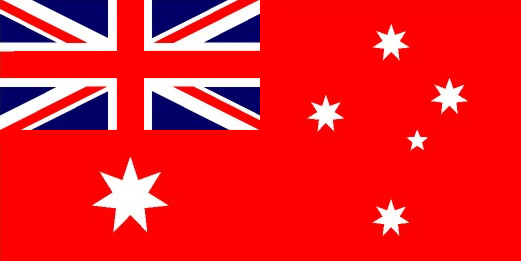The Australian Red Ensign was subject to Admiralty warrants made pursuant to section 73 of the Merchant Shipping Act 1894 (UK) until Australia’s own shipping laws took effect in January 1982.
The Admiralty Warrant of 4 June 1903 authorised the Australian Red Ensign for vessels and private leisure craft registered in Australia. In 1932 it was realised that this did not include many private non-commercial vessels, which were rarely registered. Technically they were liable to a substantial fine if they did not fly the British Red Ensign. An Admiralty Warrant of 5 December 1938 replaced that of 1903 and authorised all ships and boats owned by British residents in Australia and New Guinea Mandated Territory to fly the Australian Red Ensign.
The Red Ensign was widely used in Australia in unofficial capacities beyond its official use as a Merchant Navy flag. This was brought about due to an overabundance of flags made by flag makers, use by local governments and institutions along with soldiers so it gave the impression to the public that the Red ensign was the official flag of Australia.
The Flag Act 1953 confirmed by legislation that The Blue Ensign (Australian National Flag) was confirmed as Australia’s chief symbol. This action brought an end the unofficial use of the Red Ensign. From 1953 to 1982 this confirmed the flag design, linked the flag to the Navigation Act 1912.
This was the legislative situation until 26 January 1982 when the Shipping Registration Act 1981 and the Shipping Registration Regulations 1981 came into force. The Shipping Registration Act 1981 confirmed the Australian Red Ensign as the official proper “Colours” flag to be flown by Australian-registered merchant ships.
Either the Australian National flag or the Australian Red ensign can be flown by government ships, fishing vessels, pleasure craft, small craft, and commercial vessels under 24 metres in tonnage length, but not both ensigns at the same time.
The rule for flying flags on non-defence ships are set out in Sections 29 and 30 of the Shipping Registrations Act 1981 and regulations 22 of the Shipping Registration Regulations. Foreign vessels may, as a courtesy, fly from the foremast either the Australian national Flag or the Australian Red ensign when berthed at an Australian port.



